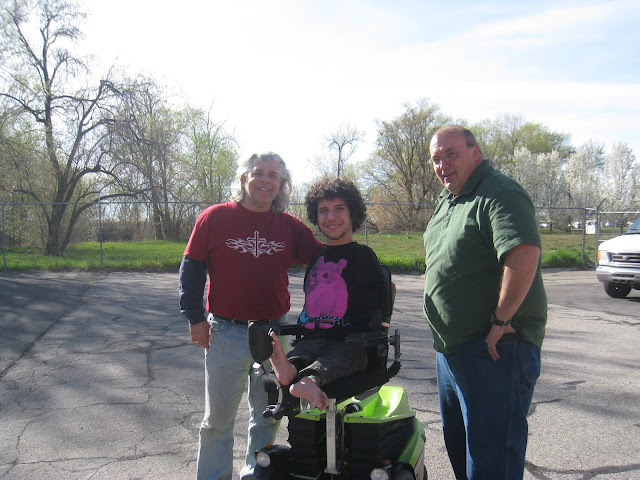An electric blanket that plugs into a wheelchair makes it easier for a woman to go to winter events at night
 |
| Julie Norman at the American Festival Chorus and Orchestra Christmas Concert |
Julie Norman used to avoid going outside at night in the winter. Even when she was bundled in a blanket, it was just too cold in her wheelchair. It took too long for a quilt to store her body heat and reflect it back to her, so just getting out to the car was a freezing experience.
"When my driving arm gets cold, I can't drive," she said, referring to the arm she uses to operate her wheelchair's joystick.
She called Logan AT Lab Coordinator Clay Christensen and asked if there would be any way to install an electric blanket on her chair. It would provide heat a lot faster than a quilt.
They discussed the possibilities. Her wheelchair did have a power outlet, similar to the cigarette lighter outlet found in cars. But the wheelchair's power source was 24 volts instead of the 12 volts available in an automobile. And while it was possible to find a 12-volt electric blanket, it wouldn't work with the wheelchair's outlet--not without overheating and possibly burning up wires.
Christensen told her to come to the lab, and he brought in volunteers Mike Stokes and Todd McGregor. Norman came with her parents, bringing an electric blanket she'd found online. It was intended for use in a car.
 |
| AT lab staff work on Julie's chair to adapt its power outlet and add a side mirror. |
Together Christensen and the volunteers worked to adapt Norman's chair so that it would work safely with a 12-volt electric blanket. They shortened up the power cord so it wouldn't be a safety hazard. And while she was there, they added a mirror to her wheelchair so Norman could view things on her left side--something she had trouble doing before without physically turning her chair.
The blanket would be a good change, she said. "This will generate heat, instead of just trapping my own." Now she could go outside for short trips in her wheelchair. She was especially looking forward to the American Festival Chorus and Orchestra's Christmas Concert on the USU campus.
That happened Thursday, and it was a glorious event, complete with the chorus and orchestra, the Westminster Bell Choir, and Utah's own singing trio, Gentri.
It was a moment no music lover would want to miss--and with a little more warmth and some help from her friends in the AT Lab, she didn't have to.
 |
| Utah's own singing trio, Gentri, performs with the American Festival Chorus and Orchestra. |










































